In the vast and timeless vision of Sanatana Dharma, divinity does not appear as a singular abstraction. It unfolds through the dynamic play of creation, preservation, and dissolution. This eternal cycle, governing both the cosmos and the inner being, is personified by the sacred Trimurti, Lord Brahma, the Creator, Lord Vishnu, the Preserver, and Lord Shiva, the Destroyer.
These three are not separate gods but three aspects of the one Supreme Reality. They represent the fundamental principles that sustain all existence:
The emergence of form and thought (Brahma)
The nurturing and protection of life (Vishnu)
The dissolution of illusion and return to the Source (Shiva)
Together, they form the divine rhythm of the universe. The pulse of birth, continuity, and transformation that beats in every atom, every soul, every breath.
The Hindu Trinity is not merely a cosmological framework. It is a profound spiritual map. Each deity is a doorway into self-realization, a cosmic principle, and an inner state of consciousness.
In this article, we journey through the symbolism, iconography, and spiritual significance of each of the three, Brahma, Vishnu, and Shiva, to understand how the universe moves, and how the seeker can awaken to the one truth behind the many forms.
Lord Brahma. The Source of All Creation
Shrouded in timeless silence before the beginning of creation, Brahma is the first expression of the Supreme Reality as thought itself. He is not just the maker of the world but the divine mind that imagines the cosmos into being. In the Hindu Trinity, Brahma stands for Srishti Shakti. The power of projection, the movement from unmanifest stillness into manifest multiplicity.
Creation begins not with form, but with a thought. And Brahma is that first thought, the Hiranyagarbha, the golden womb of cosmic intelligence. Just as a person’s world is shaped by their inner mind, the universe arises from the collective cosmic mind; Brahma.
Symbolism of Brahma’s Iconography
The form of Lord Brahma is a living scripture, with every feature revealing layers of spiritual symbolism:
Four Faces: These represent the four Vedas, the pillars of sacred knowledge. Spiritually, they also symbolize the four aspects of the inner instrument (antahkarana):
Manas (mind): emotion and desire
Buddhi (intellect): discrimination and reason
Ahamkara (ego): the sense of individuality
Chitta (memory): the storehouse of impressions
Together, they reflect how consciousness expresses itself through thought. Brahma, therefore, stands as the embodiment of the thinking principle in its cosmic form.
Seated on a Lotus: The lotus, rising pure from muddy waters, symbolizes reality arising from the unmanifest. Brahma’s seat on the lotus shows that even as the world arises, its foundation remains rooted in the Absolute (Brahman).
His Four Hands Hold:
Kamandalu (Water Pot): The mark of renunciation, used by sages. It represents detachment, the cooling of desire, and withdrawal from sense-pleasures.
Vedas (Scriptures): Symbol of jnana (knowledge). Without knowledge, no creation has structure or purpose.
Sruva (Sacrificial Ladle): Represents karma yoga, or selfless action, the fire of effort offered without ego.
Mala (Rosary): Used for mantra and meditation. This suggests that creation is not random, it unfolds with rhythm, order, and divine remembrance.
Attire of Black Antelope Skin: This is worn by ascetics and symbolizes tapas (austerity). Brahma, the great creator, is also a great renunciate, reminding us that all creativity flows from discipline and inner stillness.
Vehicle/Hamsa (Swan): The swan is said to have the unique ability to separate milk from water, symbolizing viveka (spiritual discrimination). Just as a swan glides untouched over water, so too must the seeker move through the world without attachment, seeing the divine in all, yet remaining free.
Saraswati and Brahma: Knowledge Born from Thought
In the cosmic unfolding of creation, Saraswati emerges as the mind-born daughter of Brahma, not as a consort, but as the first expression of wisdom. She represents speech (Vāk), music, and divine intelligence, born from the creative impulse of Brahma’s mind, much like light is born from fire.
As Brahma prepares to project the universe, the first thing he brings forth is Saraswati, the energy of order, language, rhythm, and meaning. Without her, thought would remain formless, and creation would lack direction. Thus, Saraswati is not a partner in the worldly sense, but a manifestation of Brahma’s own higher intellect.
This symbolic truth teaches:
- Creation begins with clarity of thought.
- Saraswati embodies the refined essence of consciousness that gives shape to the cosmos.
- She is the shakti (power) behind Brahma’s creative drive, the inner intelligence behind all manifested form.
By invoking Saraswati, seekers honour the principle that true creativity is guided by wisdom, and that discernment must precede expression.
Why Brahma Is Rarely Worshipped
Among the Hindu Trinity, Lord Brahma is the least worshipped. Temples dedicated solely to him are exceedingly rare, prominently, one in Pushkar, Rajasthan, and another in Konark, Odisha. This absence is not disrespect; it reflects a profound spiritual insight.
Brahma symbolizes the creative force of thought. The projecting power (vikshepa shakti) of the mind that gives rise to the world of plurality. But for a seeker of liberation, the goal is not to multiply thoughts, it is to dissolve them. The path to self-realization involves stilling the mind, not expanding its creations.
Therefore, in the inner path:
- Vishnu, who sustains balance and Dharma, is worshipped for harmony and preservation of values.
- Shiva, the destroyer of ego and illusion, is revered for his power to annihilate ignorance and reveal the Self.
But Brahma, as the force that multiplies thoughts and names, is respectfully transcended.
Yet Brahma remains significant. He is revered by:
- Scientists, artists, and thinkers seeking divine inspiration.
- Rulers and leaders, who invoke his clarity to envision dharmic action.
- Sages, who study creation not to indulge it, but to trace it back to its source.
Thus, while not commonly worshipped, Brahma stands as a cosmic necessity. The divine spark behind every new beginning, and the reminder that all thoughts must ultimately return to stillness.
Lord Vishnu – The Preserver of Cosmic Order
In the sacred trinity of Hinduism, Lord Vishnu embodies the power of preservation, the principle that maintains the cosmos in its rhythm and righteousness. Where Brahma is the creative force that brings form, and Shiva is the transformative force that dissolves it, Vishnu is the divine intelligence that sustains the flow of life between the two.
He is the eternal witness, resting upon the cosmic serpent Shesha in the endless ocean of existence, yet ever alert to the needs of creation. Whenever darkness threatens to overpower Dharma, whenever the balance tilts toward chaos, Vishnu descends to restore harmony, taking form as an avatar, a divine descent into time and space.
His role is not simply to protect the physical world, but to preserve the inner light of truth in all beings. Vishnu stands for:
- Faith over fear
- Order over confusion
- Compassion over indifference
He is the still centre within the spinning wheel of the universe, ensuring that the dance of life continues without collapsing into disorder.
The Essence of Vishnu: Sustainer of Dharma
Dharma is the unseen foundation of the cosmos, the moral, spiritual, and natural law that holds everything together. Lord Vishnu is the protector of this Dharma, preserving balance not only in the outer world but within the hearts of all beings.
Whenever Dharma declines and adharma (unrighteousness) rises, Vishnu manifests in human or divine form to restore harmony. This eternal promise is declared in the Bhagavad Gita:
“Yadā yadā hi dharmasya glānir bhavati bhārata,
Abhyutthānam adharmasya tadātmānam sṛijāmyaham...”
“Whenever Dharma declines and unrighteousness prevails, I manifest Myself.”
Thus, Vishnu is not a distant deity, he is the living response of the Divine to imbalance, ignorance, and suffering. His avatars are not just mythological events, they are timeless principles that show how truth returns, again and again, to protect the inner and outer world.
Through Vishnu, we learn that preservation is not passive, it is an active upholding of righteousness, through patience, compassion, and inner strength.
The Avatars of Vishnu: Divine Descents to Earth
Lord Vishnu’s avatars are not simply mythological tales. They are spiritual blueprints, showing how divine consciousness intervenes in the world whenever darkness overshadows light. Each avatar reveals a universal truth, reflecting both an outer cosmic event and an inner transformation the seeker must undergo.
The Dashavatara (Ten Avatars) unfold in a progression that mirrors the evolution of consciousness—from the simplest life forms to the highest expressions of divine wisdom.
Matsya (The Fish): When the world faced a deluge, Vishnu appeared as a fish to save Manu and the Vedas. This signifies the birth of consciousness amidst chaos, the first stir of life in the waters of the unconscious.
Kurma (The Tortoise): As the churning of the cosmic ocean began, Vishnu took the form of a tortoise to support the mountain used for churning. He teaches us to remain steady under pressure, and that spiritual effort must be anchored in patience.
Varaha (The Boar): When the Earth was submerged in the cosmic ocean, Vishnu descended as a wild boar to lift her up. This avatar represents restoring value to the material world, and the principle that nature is sacred and must be protected.
Narasimha (Man-Lion): To destroy the demon Hiranyakashipu, who defied Dharma, Vishnu manifested in a form that was neither man nor animal. This dramatic form reveals that divine justice transcends logic, and that the Lord protects those who surrender in devotion.
Vamana (The Dwarf Sage): In a humble form, Vishnu approached the proud king Bali and reclaimed the three worlds with three steps. This avatar teaches the power of humility, and how ego must bow before truth.
Parashurama (The Warrior with an Axe): Vishnu incarnated as a fierce sage to purge the Earth of corrupt rulers. He represents the inner warrior who must cut through injustice, anger, and misuse of power.
Rama (The Ideal King): As the hero of the Ramayana, Rama embodies the perfect man: righteous, compassionate, courageous, and devoted. He reveals that Dharma is not abstract, it is to be lived with unwavering integrity, even in suffering.
Krishna (The Divine Guide): Mischievous child, romantic lover, wise charioteer, Krishna’s life is multifaceted. Through the Bhagavad Gita, he becomes the teacher of yoga, devotion, and detachment, guiding the soul through every path to God.
Buddha (The Enlightened One): In this form, Vishnu spreads the message of non-violence, inner awakening, and compassion. He challenges rigid ritualism and emphasizes the direct experience of truth.
Kalki (The Final Avatar): Yet to appear, Kalki will arrive at the end of Kali Yuga, riding a white horse and wielding a sword. He signifies the end of illusion, the destruction of adharma, and the beginning of a new age of light.
Through these avatars, Vishnu reminds us that divinity walks among us, in wisdom, courage, humility, and love. His forms are many, but his purpose is one: to protect truth, uplift righteousness, and restore balance, in the world, and within ourselves.
Symbolism of Vishnu’s Iconography
The form of Lord Vishnu is a radiant representation of cosmic balance, divine protection, and eternal presence. Every feature in his iconography speaks not just of mythology, but of profound spiritual principles.
Blue Complexion: Vishnu’s deep blue skin reflects the limitless expanse of the sky and ocean. It is a symbol of the infinite, all-pervading nature of consciousness. Just as the sky holds all things without attachment, Vishnu sustains the universe without being bound by it.
Four Arms: His four arms hold the tools of preservation, each representing a power that upholds Dharma:
Shankha (Conch): The sound of creation, Om. It is the primordial vibration from which all arises.
Chakra (Disc): The Sudarshana Chakra, the wheel of time and cosmic order. It cuts through ignorance and illusion.
Gada (Mace): The power of inner strength and discipline, necessary to uphold righteousness.
Padma (Lotus): The unfolding of divine beauty, detachment, and spiritual evolution from the mud of worldly existence.
Garuda (His Vehicle): Vishnu rides Garuda, the celestial eagle, symbol of swift action and higher vision. Garuda helps carry Vishnu’s will across the universe, and within us, he represents the rise of higher awareness above the pulls of the lower nature.
Kiritamukuta (Crown): His crown signifies sovereignty over the three worlds, body, mind, and soul, and reminds the devotee of the supreme authority of Dharma.
Vaijayanti Mala (Garland): Worn across his chest, it contains sacred herbs and represents victory over time and death.
Kaustubha Gem: Embedded in his chest, this divine jewel symbolizes the purest essence of consciousness, the Atma.
Serene Expression: Vishnu’s calm and benevolent face assures that even amidst cosmic turbulence, the preserver remains unshaken. His form teaches us to act from stillness, protect without pride, and sustain with love.
Lakshmi and Vishnu: Abundance Rooted in Balance
At the heart of Vishnu’s sustaining power stands Lakshmi, the goddess of wealth, beauty, and auspiciousness. She is not merely his companion, she is his shakti, the vibrating energy of harmony and grace that allows creation to thrive.
In deep spiritual symbolism, Vishnu is the unchanging divine order, and Lakshmi is the flowing prosperity that follows it. When Dharma is upheld, Lakshmi naturally arises. She is not blind wealth, but prosperity born of balance, virtue, and service.
Their relationship teaches:
- Sustenance (Vishnu) must be accompanied by grace (Lakshmi) to be complete.
- True abundance flows not from desire, but from a life aligned with cosmic law.
- Lakshmi resides where Vishnu is remembered with devotion and discipline.
In images, she is seen seated at Vishnu’s feet, massaging them, not in submission, but as a symbol that abundance serves the one who sustains righteousness. Vishnu, in turn, respects her presence, for without Lakshmi, the world cannot blossom.
Their union reminds seekers that:
When life is rooted in Dharma, both preservation and prosperity flow together, blessing not just the self, but the whole world.
Lord Shiva – The Transformer of Consciousness
If Brahma is the origin and Vishnu the sustainer, Lord Shiva is the silent dissolver, the still fire that burns ignorance and reveals truth. He is not destruction in the worldly sense, but the destruction of illusion, of ego, of everything that veils the supreme Self.
Shiva is pure consciousness, untouched, unbound, ever free. He is the Lord of Yogis, the first ascetic, and the supreme teacher who sits on Mount Kailash in silent meditation, revealing that liberation comes not from accumulation but renunciation.
In the cosmic rhythm, Shiva is timeless stillness amidst the dance of creation and dissolution. He is called Mahadeva, the Great God, for he alone holds the power to transcend all dualities. He wears ashes, not ornaments, symbolizing detachment from the material world. His blue throat (Neelkantha) reminds us of sacrifice: when poison emerged from the churning of the ocean (Samudra Manthan), Shiva drank it to save the cosmos, holding it in his throat without letting it enter his body, absorbing pain without letting it poison his essence.
His third eye, the Jñāna Chakshu, is not of the body but of the soul’s awakened vision, the ability to see beyond appearances, to pierce through Māyā. When it opens, delusion burns away. His matted hair (jata) holds the flow of the sacred Ganga, reminding us that divine wisdom must descend slowly, tamed and guided, lest it destroy the seeker.
Lord Shiva is worshipped as Shivalinga, the formless symbol, representing the union of Purusha (consciousness) and Prakriti (energy). He is beyond name and form, beyond birth and death. He is the silence before the word, the void that holds all possibilities.
Symbolism of Shiva’s Iconography: The Silent Fire of Truth
Every aspect of Lord Shiva’s form radiates layers of spiritual wisdom. Unlike other deities adorned in jewels and colour, Shiva is draped in silence, ash, and stillness, he represents the truth that remains when all else dissolves.
Third Eye (Trinetra): Shiva’s third eye is the eye of wisdom (gyana chakshu). It opens not to see the world, but to see beyond it, to burn ignorance and awaken the soul. It signifies the inner vision that pierces illusion.
Ash-Smeared Body: Shiva wears ash not as ornament but as a reminder of impermanence. Everything that burns, desire, ego, thought, leaves behind ash. In that ash is purity. In renunciation lies transcendence.
Jata (Matted Locks): His flowing, tangled hair channels the Ganga. Symbol of divine knowledge. For ordinary beings, the descent of truth may be overwhelming; Shiva receives it first, moderates it, then lets it flow gently into the world.
Snake Around the Neck: Coiled around his throat, the serpent represents Kundalini Shakti, the dormant spiritual power within. Shiva wears it tamed and alert, showing that he has mastered his primal forces and is forever awakened.
Trishul (Trident): The trishul destroys the three-fold ego, of body, mind, and intellect. It also symbolizes mastery over the three gunas: sattva, rajas, and tamas. Shiva holds it as a reminder that inner equilibrium is victory.
Damru (Drum): In his hand, the damru creates sound, the pulse of the universe. It is the source of rhythm and time, of birth and death. The beats echo the cycles of creation and dissolution.
Tiger Skin: He sits on a tiger skin, representing the overcoming of lust and aggression, instincts that drive the animal mind. Shiva is seated above them, rooted in calm awareness.
Mount Kailash: His home is the abode of silence, beyond worldly noise, symbolizing the peak of spiritual realization. There, he sits untouched by change, in stillness that is more powerful than action.
Shiva and Shakti: Stillness and Movement, Consciousness and Creation
In the sacred vision of Tantra, Shiva and Shakti are not two separate deities, they are two aspects of one indivisible absolute. Shiva is the formless, unmoving consciousness, while Shakti is the dynamic, creative force. Together, they symbolize the eternal interplay of silence and sound, stillness and motion, awareness and manifestation.
Without Shakti, Shiva cannot act. As the Kularnava Tantra declares:
“Shakti is the very essence of Shiva. Without her, He is incapable of even the slightest action.”
(Kularnava Tantra, Chapter 1, Verse 6)
Shakti is not merely consort, she is Shiva's own power (svarūpa-śakti), inseparable from Him, just as heat is inseparable from fire. She manifests the universe, sustains it, and dissolves it, all as a play within the field of consciousness.
Shiva, alone, is pure awareness, Shava, inert and still. It is only when Shakti awakens that creation begins. She moves as Kundalini, rising through the chakras in the yogi’s body, and culminates in union with Shiva at the crown, Sahasrara. Their union is the highest spiritual realization: the meeting of the seeker and the Self.
The image of Ardhanarishvara, the half-Shiva half-Shakti form, illustrates this profound truth, divinity is not male or female, but the transcendence of both. It affirms that the ultimate reality is a union:
Consciousness without energy is powerless. Energy without consciousness is blind.
In the path of realization, one must awaken Shakti through devotion, discipline, and inner fire, and guide her toward union with Shiva, the eternal, undisturbed witness.
This is not merely cosmic philosophy, it is the journey of every soul, longing to awaken from forgetfulness into the radiance of the Self.
Unity in the Trinity: One Divine in Three Forms
Though worshipped separately, Brahma, Vishnu, and Shiva are not three different gods. They are three faces of the One Supreme Reality. Just as time flows through the phases of birth, growth, and dissolution, the cosmos expresses itself through creation, preservation, and transformation. These are not distinct events, but an eternal cycle, each nourishing and requiring the other.
- Brahma brings forth form.
- Vishnu nurtures and upholds it.
- Shiva dissolves it back to essence.
This movement is not linear but circular and inward, just as a breath is incomplete without both inhalation and exhalation.
This unity is beautifully represented in the form of Lord Dattatreya, who bears the three heads of Brahma, Vishnu, and Shiva. He symbolizes the non-dual nature of the divine, reminding us that what creates, preserves, and dissolves is ultimately the same undivided source.
For the seeker, the Hindu Trinity is not just theology—it is a mirror.
Your own life carries this rhythm:
- New thoughts emerge (Brahma)
- They are nurtured and matured (Vishnu)
- And finally dissolved in silence (Shiva)
To realize this is to understand that the gods are not outside you. They are within your own consciousness.
In the realization of this unity, the seeker transcends worship and becomes one with the divine rhythm of existence.


-in-Astrology.jpg)
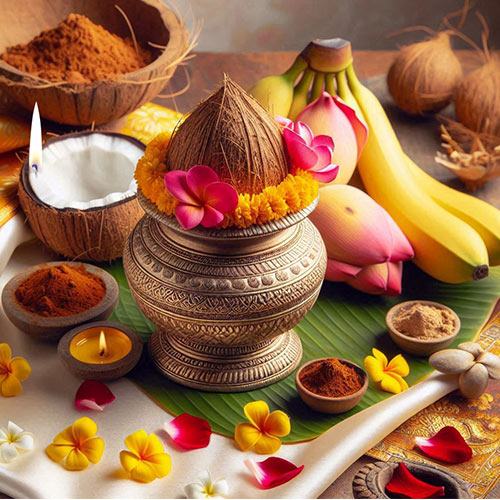

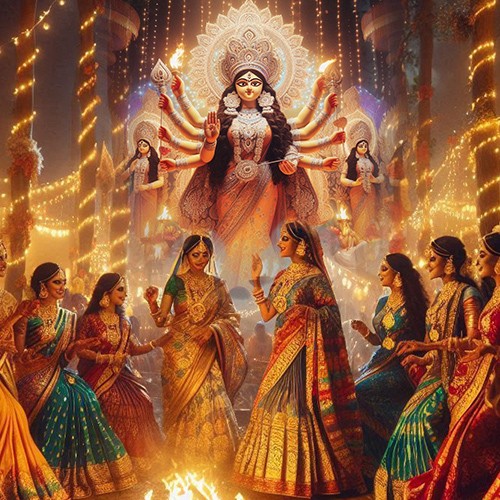
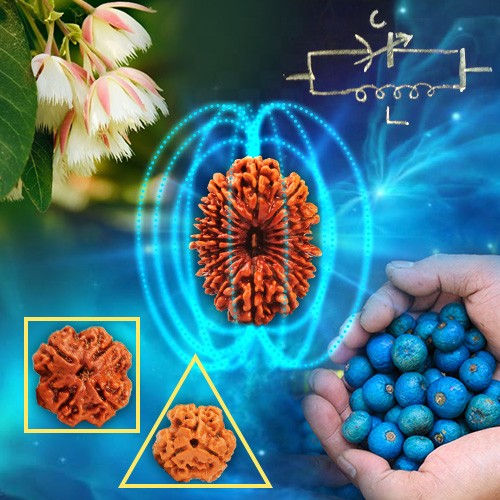

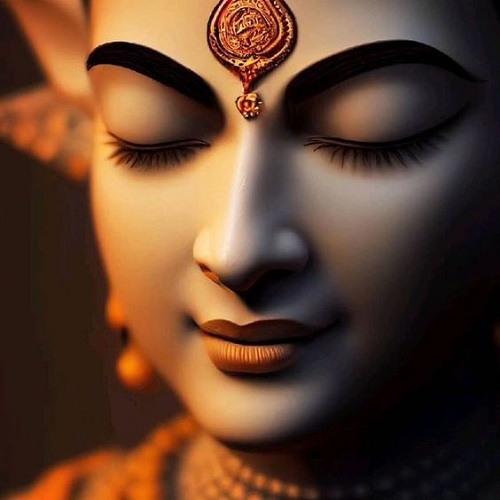
.jpg)
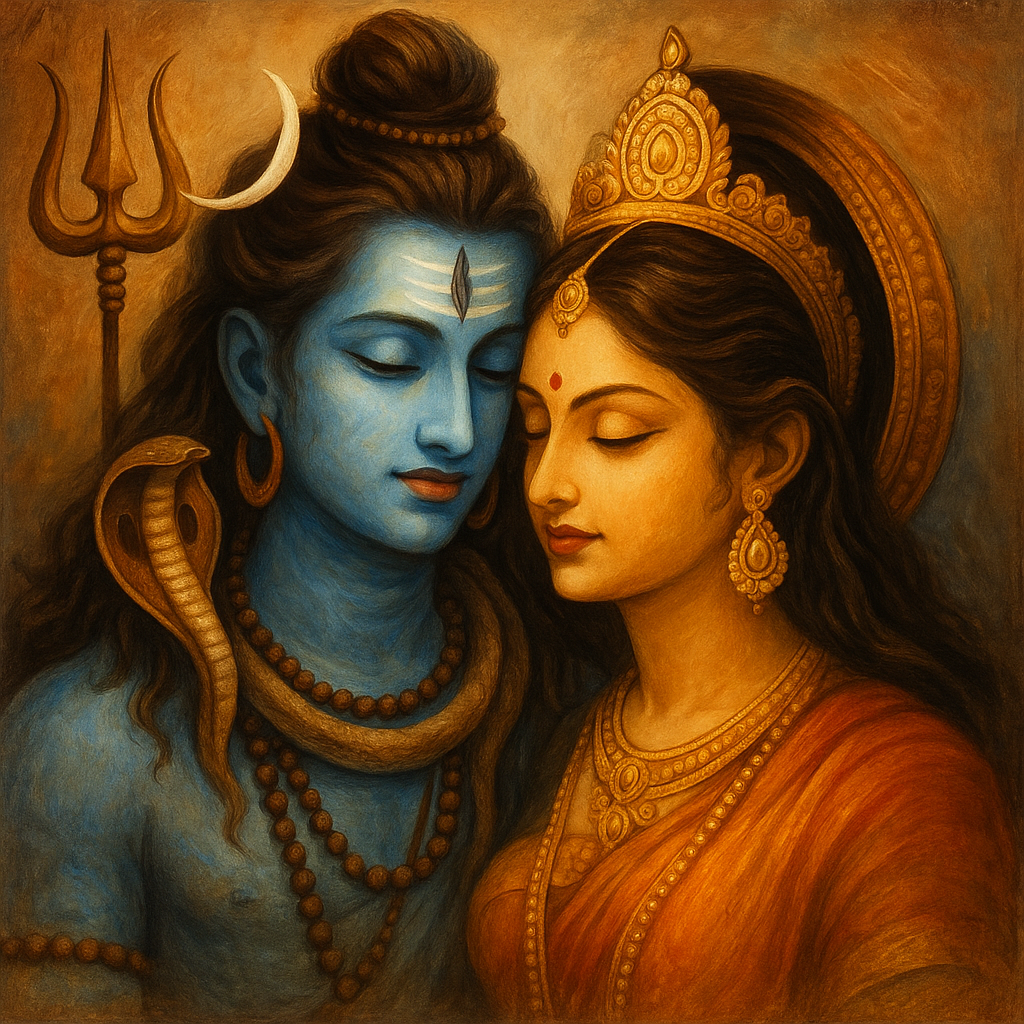
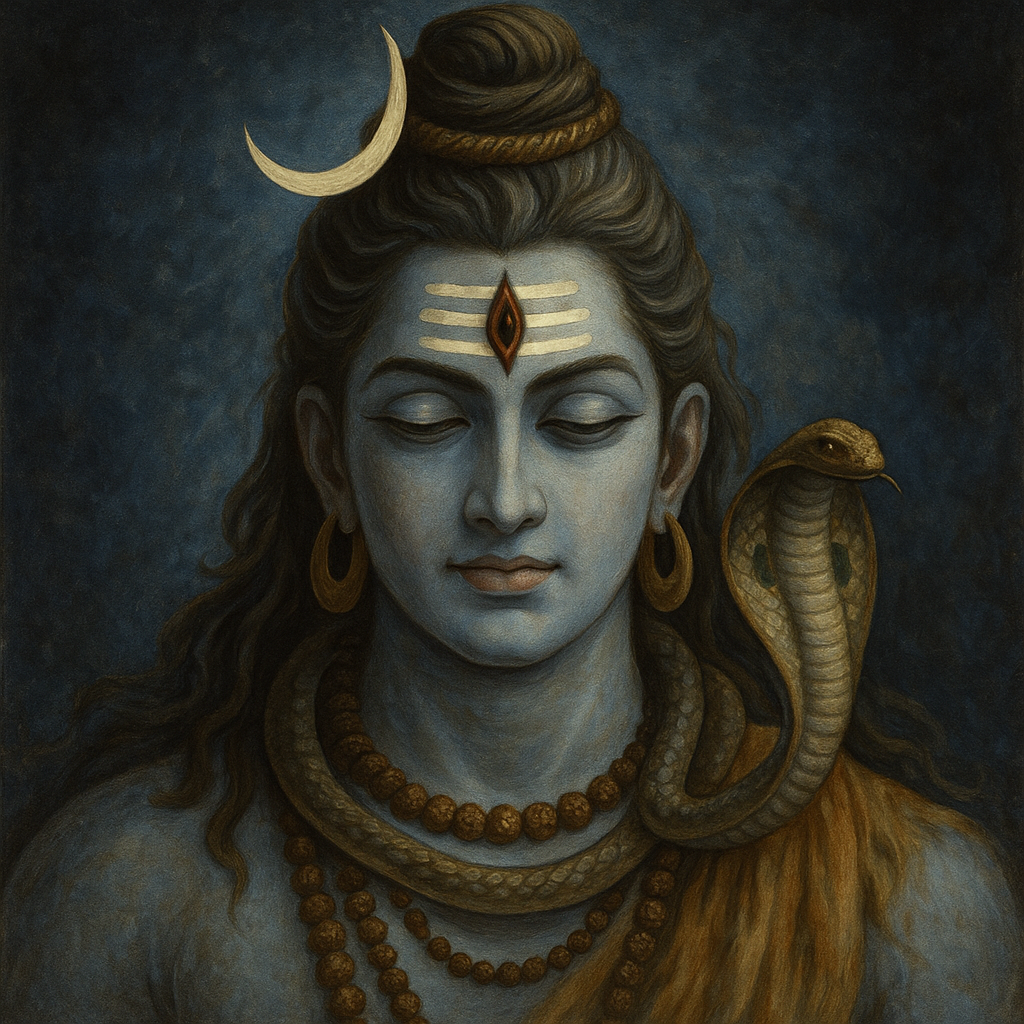
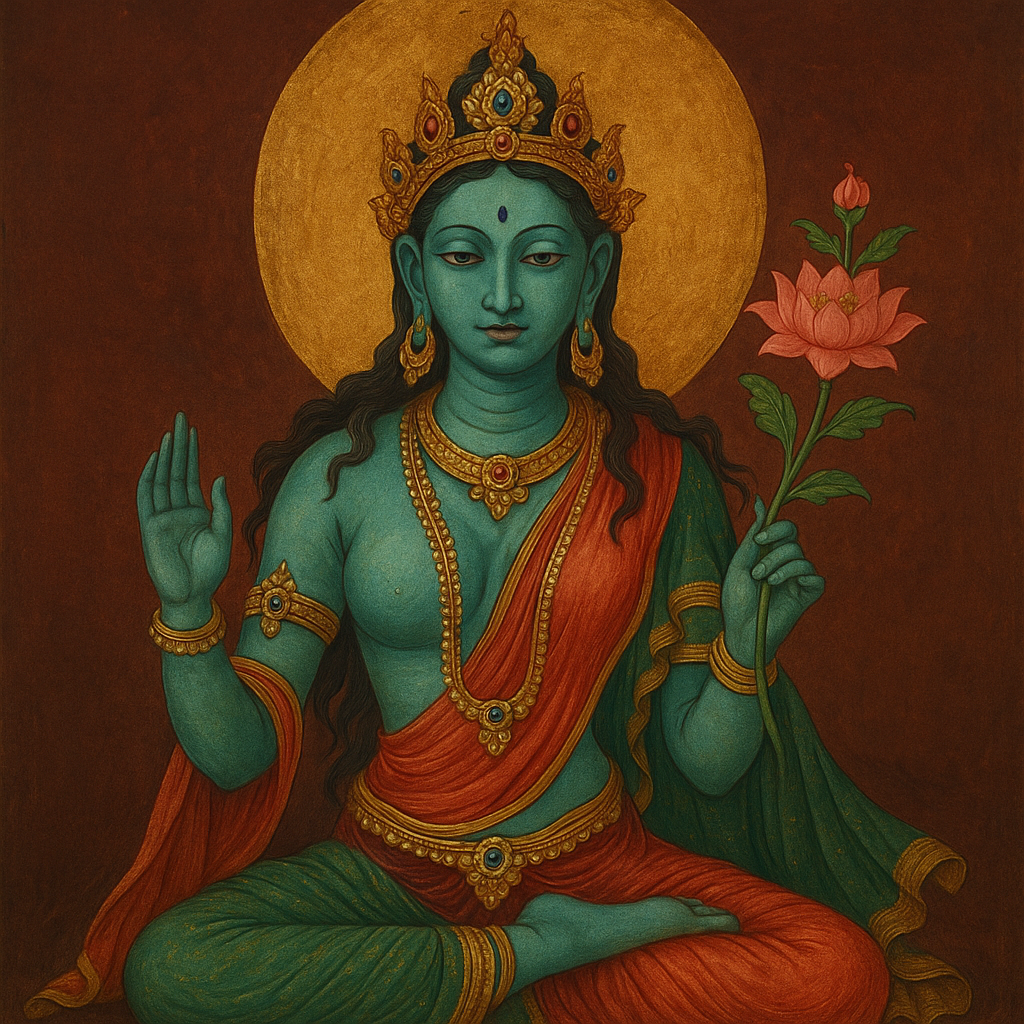
Comments 0
Leave your thought here